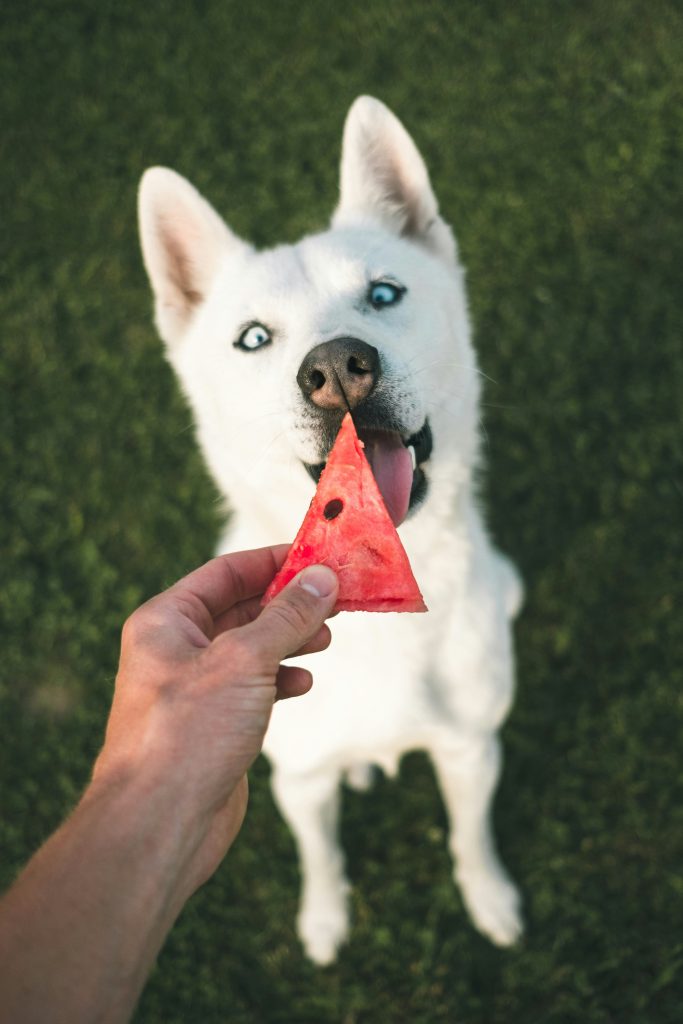The article provides an overview of portion control and feeding schedules for dogs, emphasizing the importance of portion control for dogs, different feeding schedules for puppies and adult dogs, choosing the right dog food, and the importance of healthy dog treats.

Overview of Portion Control and Feeding Schedules for Dogs
Portion control is essential for dogs’ health as it helps prevent overeating, which can lead to obesity, cardiovascular problems, and other health issues in the long term. By monitoring the amount of food given to a dog based on its age, weight, and activity level, pet owners can tailor their pet’s diet to meet their specific nutritional needs and prevent excessive weight gain. For example, feeding an adult dog two equal portions of meals a day, 12 hours apart, helps in maintaining a healthy metabolism and preventing digestive problems.
Feeding schedules are equally important as they impact a dog’s overall well-being. Consistency in feeding times helps regulate a dog’s body clock, reduces anxiety, and can aid in house training, especially for puppies. For instance, gradually transitioning puppies to an adult feeding schedule as they grow older not only aligns with their changing caloric needs but also helps in establishing a routine that supports their development. Consulting a vet for advice on adjusting portion sizes and feeding times can ensure that puppies of different breeds receive the specific nutrition they require for healthy growth and development.
Importance of Portion Control for Dogs
Portion control plays a vital role in ensuring the health and well-being of dogs. Larger portions can significantly impact a dog’s food consumption , potentially leading to various health issues like obesity, diabetes, and digestive problems. It is crucial for pet owners to be mindful of the amount of food their dogs are consuming to prevent these adverse health effects. For example, an overweight dog may suffer from joint problems or a decreased quality of life due to the strain on their body caused by excess weight.
Moreover, studies have indicated that dogs tend to eat more food as portion sizes increase, underscoring the importance of implementing portion control strategies in their feeding routines. By carefully managing portion sizes and feeding schedules, pet owners can help their dogs maintain a healthy weight and reduce the risk of obesity-related conditions. For instance, feeding adult dogs two equal portions of meals a day, as recommended, can prevent overeating and support their digestive health. Additionally, consulting a vet for specific guidance on adjusting portion sizes based on a dog’s breed and activity level can ensure optimal nutrition and overall well-being.

Feeding Schedules for Puppies
Establishing appropriate feeding schedules for puppies is crucial for their growth and development. As puppies mature, it is essential to transition them to an adult feeding schedule by the time they reach one year of age. For young puppies, frequent feeding throughout the day is necessary to support their high energy levels and rapid growth. As they grow older, the frequency of meals should be gradually reduced to align with adult dog feeding schedules, typically consisting of two meals per day.
Consulting a veterinarian for tailored recommendations on adjusting portion sizes and feeding times is highly recommended for puppies of different breeds and ages. For example, smaller breeds may have different nutritional requirements compared to larger breeds, and adjustments may need to be made accordingly. Veterinarians can provide valuable insights into the specific dietary needs of individual puppies, ensuring they receive the right balance of nutrients for optimal health and growth. By seeking professional guidance, pet owners can help prevent issues such as overfeeding or underfeeding, which can have long-term implications for a puppy’s well-being.
Feeding Schedules for Adult Dogs
Establishing a consistent feeding schedule for adult dogs is essential for maintaining their health and well-being. By feeding adult dogs two equal portions of meals a day, spaced approximately 12 hours apart, pet owners can help regulate their metabolism and prevent digestive problems. For example, feeding a dog in the morning and evening ensures that they have the necessary energy throughout the day and allows for proper digestion before resting at night. This routine can also reduce the risk of bloating or other gastrointestinal issues that may arise from irregular feeding times.
Moreover, implementing portion control strategies can prevent overeating and maintain a healthy weight for adult dogs. Dogs that tend to graze throughout the day can benefit from having their daily food portion pre-measured and offered in intervals, rather than free-feeding. This method not only helps prevent excessive calorie intake but also promotes mindful eating habits. For instance, using puzzle feeders or slow feeder bowls can engage the dog’s natural foraging instincts, slowing down their eating pace and preventing them from consuming food too quickly, which can lead to digestive upset. By incorporating mental stimulation during feeding times, such as interactive toys or feeding puzzles, pet owners can enhance their dog’s mealtime experience while encouraging physical activity and cognitive engagement.
Choosing the Right Dog Food
When selecting the right dog food for your furry companion, several factors should be considered to ensure their well-being. Exercise level is a crucial aspect to contemplate when determining the appropriate amount of food for a dog. For instance, a highly active dog will likely require more calories to support its energy needs compared to a less active dog. By understanding your dog’s exercise routine, you can tailor their food portions to maintain a healthy weight and lifestyle.
In addition to exercise, a dog’s weight and metabolic rate are significant factors in deciding the proper food quantity. Overweight dogs may need a specially formulated diet to help them shed excess pounds, while underweight dogs might require a higher calorie intake to reach a healthy weight. Furthermore, considering a dog’s metabolic rate can assist in determining how fast they burn calories and what type of diet suits them best. This personalized approach to portion control can contribute to your dog’s overall health and longevity.
Moreover, in the quest for optimal nutrition, utilizing dog food feeding charts as a starting point for portion control is highly advisable. These charts, tailored to different weight ranges, offer a baseline for the amount of food your dog should consume. By following these guidelines and adjusting based on your dog’s individual needs, you can prevent issues like obesity or malnutrition. Additionally, opting for natural dog food options can provide numerous health benefits, such as improved skin and coat health. Natural foods often contain essential nutrients and avoid harmful additives, promoting your dog’s overall well-being.
 Importance of Healthy Dog Treats
Importance of Healthy Dog Treats
Incorporating healthy dog treats into a dog’s diet can offer numerous benefits beyond just satisfying their taste buds. These treats can play a pivotal role in enhancing the overall well-being of your furry friend and strengthening the bond between the dog and the owner [1, 5]. For instance, using treats during training sessions can be a powerful motivator for dogs to learn new commands and behaviors, making the training process more effective and enjoyable for both parties involved. By associating positive experiences with treats, dogs are more likely to respond well to commands and feel encouraged to follow instructions, leading to a harmonious relationship between the pet and the owner.
Moreover, understanding the potential consequences of overfeeding or underfeeding treats is crucial for maintaining a dog’s health and vitality. Overfeeding dogs with treats high in calories and fats can contribute to weight gain, leading to obesity-related issues such as difficulty breathing, a shortened lifespan, and musculoskeletal problems. Conversely, depriving dogs of treats or underfeeding them can result in weight loss, a weakened immune system, and decreased energy levels, impacting their overall quality of life. Therefore, the key lies in striking a balance and offering healthy, natural treats in moderation to prevent any adverse health effects while still indulging your furry companion with tasty rewards.
